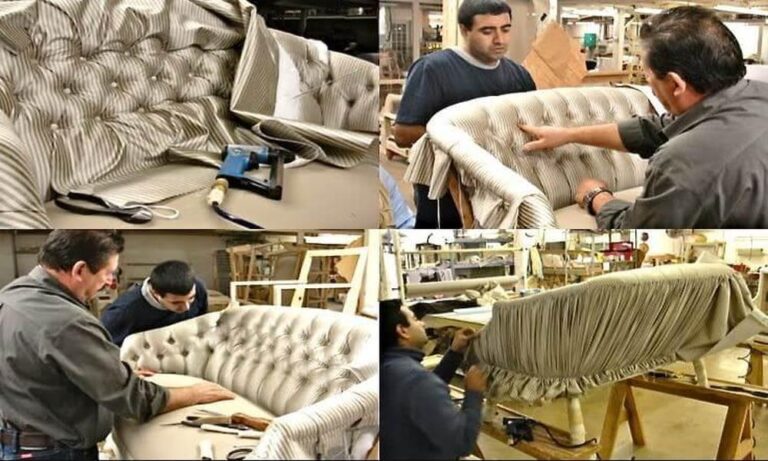Upholstery is the art of adding padding, covering, and decorative details to furniture, particularly chairs, sofas, and other seating. Upholstery serves a dual purpose, adding to the visual appeal of furniture while also increasing its comfort level. Whether you’re looking to revamp old furniture or you’re in the market for new pieces, understanding the features of upholstery will help you make informed decisions.
Types of Upholstery
There are several types of upholstery, including traditional, contemporary, and transitional. Traditional upholstery features classic designs and details, such as rolled arms, tufting, and decorative skirts. Contemporary upholstery tends to be minimalist, with clean lines and smooth textures. Transitional upholstery combines elements of both traditional and contemporary styles, creating a timeless look that is neither too ornate nor too simplistic.
Materials Used in Upholstery
Upholstery materials can be divided into two main categories: natural and synthetic. Natural materials include leather, wool, cotton, and silk. These materials are known for their durability and aesthetic appeal, but they can be more expensive than synthetic materials. Synthetic materials, such as polyester, nylon, and rayon, are generally more affordable and easier to clean than natural materials. However, they may not last as long and may not have the same visual appeal as natural materials.
Padding and Cushioning
Padding and cushioning are essential components of upholstery. Padding is the material that is placed between the frame of the furniture and the outer covering, providing shape and structure to the piece. Cushioning, on the other hand, refers to the material that is used to create the seating area of the furniture, providing comfort to the user. There are several types of padding and cushioning materials available, including foam, cotton, and down. Each material has its own unique properties and benefits, and the choice of material will depend on the desired level of comfort and durability.
- Covering Materials
Covering materials are the outer layer of upholstery, providing the visual appeal of the piece. There are several types of covering materials available, including fabrics, leather, and vinyl. Fabrics can be made from a variety of materials, including cotton, wool, and polyester. Leather is a popular covering material due to its durability and classic appeal. Vinyl is a synthetic material that is often used as an affordable alternative to leather.
Design Elements
Upholstery design elements refer to the decorative details that are added to furniture to enhance its visual appeal. These elements can include tufting, piping, and nailhead trim. Tufting involves pulling the covering material taut and then securing it with a button or stitch, creating a tufted effect. Piping involves adding a decorative cord or fabric to the edges of the furniture, providing a finished look. Nailhead trim involves adding decorative nails to the edges of the furniture, providing a classic and timeless look.
Maintenance and Care
Proper maintenance and care are essential for extending the life of upholstered furniture. Regular cleaning and maintenance will help to prevent stains and damage, while also keeping the furniture looking its best. Depending on the type of material used in the upholstery, different cleaning and care methods may be required. For example, leather upholstery may require special cleaning products and conditioning treatments to keep it looking its best.


Comments are closed.